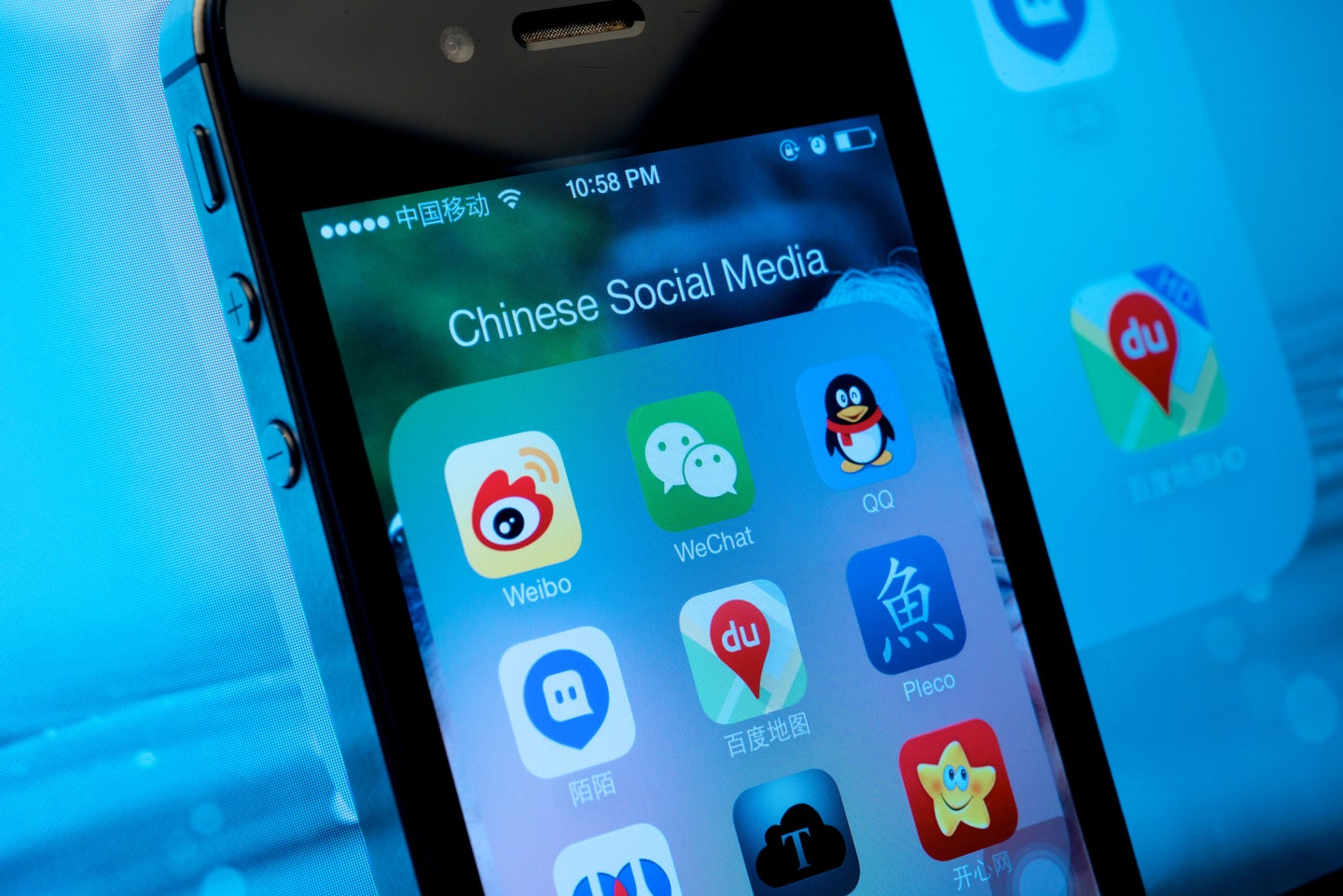How China has shaped information about the Wuhan coronavirus online
One strategy: pointing at the flu season in the US.

The Eastern Arsenal blog is written by Peter W. Singer and BluePath Labs.
The outbreak of the coronavirus in Wuhan, China has caused widespread panic within China and sent shockwaves through the global community as it spread beyond China’s borders to 28 countries so far. But just as quarantine controls have been put in place to restrict the spread of the virus (which is technically called 2019-nCov), the Chinese government has taken measures to control and shape information about it online.
Related: Read PopSci’s full, ongoing coverage of the virus.
In a mirror of how the regime has traditionally handled bad news that it worries might be potentially disruptive, there appear to be three tracks of activity in China’s online war on the virus: censoring negative information, flooding social media with diversionary stories, and pushing false narratives.
Chinese government control of the media and online conversation is of a massive scale, but it is notable how quickly a pattern of suppression and deflection began. When discussion of the outbreak began to appear online in late December, the Wuhan government moved quickly to suppress news of the initial outbreak. Wuhan Public Security went so far as to investigate and carry out unspecified legal actions against eight doctors who posted on social media about the virus. State media followed this up with reminders from the police that it would pursue anyone else who spread false rumors.
After the virus spread and the outbreak became official (the regime formally acknowledged it on January 9), an alternative tack took hold. This followed the common tactic of diversion, downplaying the significance of the outbreak in China by making comparisons to what other nations have faced.
One example of a story that appears to have been promoted to muddy the waters focused on deaths in the U.S. from common flu. The day before the Wuhan city-wide lockdown went into effect, Chinese state media began reporting that the 2019-2020 flu season had already killed 6,600 people in the United States, a 40-year high. This quickly went viral, and outlets such as Beijing News, Tencent News, and various public WeChat accounts also picked it up.
Soon related hashtags like “MostDeadlyFluin40YearBreaksOutinUSA” [original: #美国暴发40年来最致命流感#] and the similar “FluBreaksOutinUSA” [美国爆发乙型流感#] began trending on Weibo, with 220 million and 471 million views as of January 27. As the story grew on Chinese social media, it began to reach global audiences. The ironic result was that many Chinese nationals living in the United States began to be asked by their friends and relatives back in China about the flu situation in the US.
In reality, influenza in the United States is indeed causing a high number of doctor visits for what the CDC calls “influenza-like illness,” and the estimated death toll so far is actually 10,000 to 25,000, according to the CDC. (For context, the record 2017 – 2018 flu season saw an estimated 61,000 deaths.) And for comparison, in China, a 2019 study in the journal The Lancet: Public Health estimated that the country had an average of 88,100 flu-related deaths annually over a five-year period.
The timing of the posts in China and the way the information was presented illustrates the intent behind the push of the common flu story. If this was not calculated propaganda meant to highlight supposed problems in other countries, it would have made more sense to have used the report to emphasize that the Chinese citizens are equally vulnerable to the more common flu and use the opportunity to highlight the importance generally of flu shots and preventative measures that would protect from both the flu and the novel coronavirus.
As the coronavirus spread further, to an official count in China of 17,386 infections and 362 deaths so far, there has been a pushback of sorts against these stories on social media, showing a building frustration the regime must next manage. Some urged the discussion of flu in the US to end, so to not divert attention from the domestic situation, while others noted that the flu season and the coronavirus outbreak should not be compared in the same breath.
The final track typically used to shape online discussion and thus real world beliefs and actions is to push false narratives. As concern and even anger over the outbreak has spread, there has been various efforts to counter a theme of blame over the slow response by the government by instead claiming the opposite. An illustration was provided when a senior government official pushed out a claim of a new hospital (BuzzFeed has the full story) at the epicenter of the outbreak being constructed in just 16 hours; here’s the text from a now-deleted tweet:
The claims were then then pushed out wider by regime outlets like People’s Daily, the largest newspaper in China, and Global Times, reaching into news and social media in the West. As media outlets outside China, like BuzzFeed, soon noticed, the photo was actually of an apartment building on the other side of the country. (Meanwhile, besides that disinformation, the country really is quickly building a new hospital, The New York Times reports.)
In sum, the episode is a good illustration of how pandemics of health and information can both be shaped and get out of control.
Peter W. Singer is Strategist at New America and author of the books Ghost Fleet, LikeWar, and the upcoming Burn-In.
BluePath Labs is a DC-based consulting company focused on research and analysis, disruptive technologies, and wargaming.